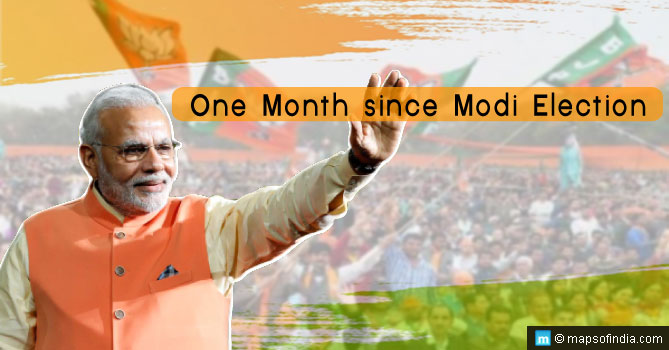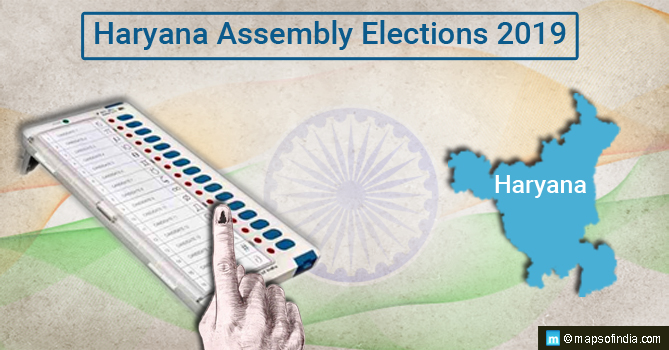
It’s a month now since the 2019 general election results revealed a remarkable vote of confidence by the people of India in Prime Minister Narendra Modi and his NDA government. The resounding victory has raised hopes and expectations of the people who now look forward to PM Modi delivering on his electoral promises.
Twenty-three days into the Modi 2.0 government (Modi 2.0 was sworn-in on May 30, 2019) is a bit early for a snapshot review of performance, but this government seems to be in a hurry to deliver on its promises and has hit the ground running. There has been a lot of activity across the administrative, economic, diplomatic, and political spectrum.
Let’s take a quick look at the action taken thus far.
National Security
BJP fought and won the elections on two major focus areas – Corruption and National Security. Immediately after being sworn-in, PM Modi appointed Amit Shah as the Home Minister and raised NSA Ajit Doval’s status to full cabinet rank, indicating the increased focus and priority on internal security.
HM Amit Shah reiterated the government’s seriousness in fighting terrorism and all those who support and fund it, within and outside the country. He also reiterated the government’s commitment to solving the complex issue regarding J&K and pursuing abrogation of Article 370 and Article 35(A), as promised.
Fight against Corruption
The PM sent out a strong signal to the bureaucracy and the nation at large that the government is serious about fighting corruption. Within twenty days of Modi 2.0, the government has invoked Fundamental Rules 56(j) and axed 12 Income Tax officers over corruption charges. Another 15 IRS officers belonging to the Central Bureau of Indirect Taxes (CBIC) were forcefully retired under the same rule. Expect more action on this regard in coming time. Moreover, on the compliance front, more than 5000 exporters have been identified for manual screening of suspected fraudulent GST claims through bogus invoices.
Social Welfare
Minority outreach
In one of the first initiatives undertaken by the new government, a scholarship has been announced that will cover 5 crore minority students, half of which will be girls. The government has also announced a major plan to bring Muslim minorities into the mainstream by introducing subjects like Mathematics, Science, Computers, English and Hindi in Madrassas. Both initiatives will have a positive impact and help in the economic uplift of minorities in the long term.
Drinking water
PM Modi has accorded Mission status to bringing piped drinking water to every household in the country by 2024. It’s ambitious, but anyone knowing how the PM works thinks its likely to be achieved.
Economy
The government has set itself the target of transforming India into a $5 trillion economy by 2024. For this, the government has initiated several structural reforms and set in motion plans to:
– increase investment in agriculture, modernize the supply and distribution chain and raise farmer income
– introduce labour reforms
– raise revenues through more efficient implementation of GST
– bring down NPAs ailing the banking sector; merge smaller banks with larger ones
– step up investment in infrastructure through major initiatives like the Quadrilateral project, build a second dedicated freight corridor, partial privatization of railways, easing credit availability to MSMEs, encouraging start-ups through tax sops and easy credit.
Defence
– Modernization through rightsizing: The new government has already initiated the transformation of India’s defence forces into a lean and mean fighting machine through modernization and more efficient deployment of manpower. It plans to modernize equipment and reduce excess manpower rapidly.
– Cyber and Space Command: The tri-services are finally coming together to jointly focus into the two emerging battle frontiers, both of which require a focus on R&D and greater reliance on domestic talent.
– Make in India and exports: The new government has already indicated it plans to step-up the Make in India initiative by involving greater private sector participation in manufacturing and exports. Active discussions are underway to push this further.
International Relations
By inviting leaders of BIMSTEC countries for the swearing-in ceremony, PM Modi announced government’s priority towards the Neighbourhood First and Look East policy. Towards the same, Maldives and Sri Lanka, respectively, were chosen for PM Modi’s first official visit in Modi 2.0. External Affairs Minister S. Jaishankar’s visit to Bhutan as his first official engagement taking over further strengthened the message to the world.
Modi 2.0 plans to continue to isolate and expose Pakistan on the global stage while stepping up its relations with the US, Japan, EU, and Australia through enhanced co-operation in geo-strategic areas including the Indian Ocean Region.
Challenges
Modi 2.0 faces challenges in expanding into the southern states, reclaiming states it lost, and in stepping up its engagement in J&K.
The new Home Minister Amit Shah has re-iterated the new government’s commitment to removing the contentious Article 370 and Article 35(A) but moving forward on these while maintaining peace and order will not be easy. Peaceful resolution of the Ram Mandir issue is another major challenge.
Modi 2.0 has shown the same zest and fervour seen in the early phase of Modi 1.0. The nation hopes it will continue through the remaining term.
Related Links:




